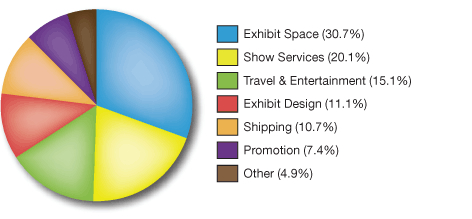Take A Bigger Piece Of The Marketing Pie
/ Finding the right promotional product that enforces a brand under budgetary restrictions are some of the biggest challenges that promotional products sales or project management representatives face with their clients. The knee-jerk reaction is to adhere to those budgetary constraints by delivering affordable, albeit sub-standard product that meets those challenges, inadvertently compromising a client’s brand integrity along the way.
Finding the right promotional product that enforces a brand under budgetary restrictions are some of the biggest challenges that promotional products sales or project management representatives face with their clients. The knee-jerk reaction is to adhere to those budgetary constraints by delivering affordable, albeit sub-standard product that meets those challenges, inadvertently compromising a client’s brand integrity along the way.
Oftentimes, salespeople are led by buyers who are convinced since they are working on a budget, they are limited in the products they can choose. This may be true, but in most circumstances, it is not. Even when working with a sizable budget, it is imperative that salespeople don’t get too focused on per-unit costs of the products they are selling but rather concentrate on a client’s overall marketing spend.
Instead of thinking about per-unit costs, which limits your client’s choices, learn how to get an overall perspective of the client’s total marketing spend for the event, tradeshow, promotion, product launch or campaign. Then, begin to understand where the products you present fit into that bigger picture. I like to think about all of this in terms of a pie.
For instance, our wireless tech client is going to Interop, the world’s largest independent technology expo in Las Vegas in March. Our first goal is get broader understandings of her overall tradeshow marketing spend. After we’ve discussed and learned some of her projected tradeshow expenditures, we identified her big budget categories.
Her first “spend” or piece of the budgetary “pie” goes to the exhibitor company who makes both her booth and graphics. The next piece of the pie is allocated to the transportation company, then the fulfillment house and the exhibition costs. Finally, the last piece of the pie is allocated towards her marketing budget for uniforms and tradeshow giveaways. An unseasoned salesperson usually identifies that last category only. But, a seasoned salesperson might delve further.
In discussing our client’s exhibition costs, or the first piece of the pie, we learned that the exhibitor company outsourced tablecloths, banners, graphics and the like, but it specialized in the booth hardware. By asking the right questions, we learned that we could save our client money through our own promotional resources, trimming her overall booth costs.
Through similar conversations, we also learned that our client’s transportation costs not only included a handling fee from the fulfillment house for holding the goods as we shipped them but that she was also charged by the day to have them held. In addition, we knew she would be charged both shipping and handling fees for transporting the goods to the show. From that discussion, we worked to save our client money by shipping our products as close to the event date as possible. In some cases, we shipped product directly to the tradeshow, tracking the product along the way for her, with the ultimate goal of cutting out fulfillment costs altogether. Due to this big picture planning, we were able to trim the client’s overall tradeshow budget and reallocate some of that budget to promotions that she could use to generate booth traffic, develop leads and promote sales.
Now that the budget was finally determined, we started to break down our client’s promotional product needs for her biggest tradeshow event of the year into two categories: employee uniforms and attendee giveaways. We determined that the client’s uniforms had to be top-notch and SCREAM image, but moreover withstand a full year of other shows and washings that followed Interop.
Next, we ascertained that our client valued attendees of the tradeshow differently. Those attendees were placed into A, B and C categories. All attendees who stopped our client’s booth received a C-level gift, or under $5 items that could be handed out at will to the masses. Mid-level managers, with an in-booth appointment, received a B-level gift with a higher spend and lower distribution. Executives or company principals were given an A-level gift with an even higher budget and much lower distribution ratio.
Throughout this whole process, we determined actual budget by focusing on our client’s overall spending and not our client’s initial per unit cost directives. Predictably, the client allocated more of her budget to promote company awareness and goodwill, and we increased our revenue by $4500—or the amount that we eventually saved her through ample discussion and careful planning. Though the client’s eyes, this is also where we seized the opportunity to advance from being a product salesperson to an on-call and invaluable marketing consultant and resource.

